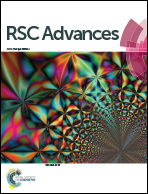Preferential 〈220〉 crystalline growth in nanocrystalline silicon films from 27.12 MHz SiH4 plasma for applications in solar cells
Abstract
It has been experimentally demonstrated that silicon nanocrystallites (Si-ncs) are generally of 〈111〉 crystallographic orientation from random nucleation, which are associated to highly defective polyhydride networks at the grain-boundary; however, ultra-nanocrystallites preferably harvest a 〈220〉 alignment due to the thermodynamically preferred grain growth with concomitant monohydride bonding at the boundary. Using an excitation frequency (27.12 MHz) higher than the conventional frequency of 13.56 MHz, and its stimulus impact in terms of larger ion flux densities with reduced peak ion-energy in the plasma and its associated ability to efficiently generate atomic hydrogen, nanocrystalline silicon (nc-Si) films are produced. The nc-Si:H films grown at elevated pressures demonstrate enhanced growth rates, lower hydrogen contents, lower microstructure factors, preferred 〈220〉 crystallographic orientation and possess a significant fraction of ultra-nanocrystalline component in the Si-network, along with a higher intensity of monohydride bonding at the grain boundary by bond-centered Si–H–Si modes in a platelet-like configuration. The material prepared at a low power and low temperature is extremely suitable, in every aspect, for efficient application in the fabrication of nc-Si p–i–n solar cells.


 Please wait while we load your content...
Please wait while we load your content...